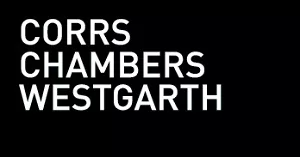This week's TGIF considers a recent decision of the High Court of Australia, in which a 4:3 majority held that a former trustee is not owed any fiduciary obligation by a successor trustee.
Key takeaways
- Subject to taking protective measures at the outset, any change
in trustee can expose trust creditors and the former trustee to the
risk of the subsequent trustee dissipating trust assets to
frustrate recovery.
- The former trustee (and any subrogated trust creditor) will
not be able to claim a breach of fiduciary obligation as a
basis for a Barnes v Addy claim against any third party to
whom trust assets are transferred. This is because, unlike a
beneficiary, the former trustee is not owed any fiduciary
obligation.
- There may be alternative recovery action available. This may include taking action quickly to seek freezing orders or other injunctive relief, subject to considering carefully the form of action and the facts.
What happened?
The case concerned the Sly Fox Family Trust. Mr Naaman was a judgment creditor of its former trustee, Jaken Property Group Pty Ltd (In Liquidation) (JPG) for c.$3.4m. Mr Naaman was subrogated to JPG's indemnity out of the trust assets for that amount and had a caveat over the trust's main asset, O'Malleys Hotel in Kings Cross.
However, the trust's successor trustee, Jaken Properties Australia Pty Ltd (Jaken), allegedly transferred trust assets to third parties to frustrate JPG's recovery under its indemnity.
As the trust assets had been depleted, Mr Naaman sought recovery action against the third parties. However, such claims could only be established if Jaken had a fiduciary obligation to JPG. This formed an indispensable element of establishing a claim of knowing receipt or knowing assistance under either limb of Barnes v Addy.
Before the High Court appeal
At first instance, in the Supreme Court of New South Wales, Justice Kunc had held that Jaken did owe JPG a fiduciary obligation to not deal with the trust assets to 'destroy, diminish or jeopardise' JPG's right of indemnity out of the trust assets. His Honour ordered equitable compensation and an account of profits against Jaken and the third parties.
However, Jaken successfully appealed to the New South Wales Court of Appeal, where Judges of Appeal Leeming and Kirk held that there was no fiduciary obligation to a former trustee in respect of its right of indemnification or beneficial interest in the trust assets (i.e. the former trustee's 'lien'). Chief Justice Bell dissented, saying that a fiduciary obligation was owed by the successor trustee to the former trustee upon the former becoming aware the latter had a claim to indemnification against the assets of the trust.
The High Court decision
The High Court of Australia dismissed Mr Naaman's appeal from the Court of Appeal decision with costs, in a 4:3 split decision.
A majority of the High Court (Chief Justice Gageler, Justices Gleeson, Jagot and Beech-Jones) held that a successor trustee does not owe an obligation to a former trustee to preserve their right to indemnity from the assets of the trust.
The majority clarified that rights of a former trustee were best characterised as a beneficial interest in the trust assets commensurate to their indemnity. This takes priority over the named beneficiaries' interest in the trust. A former trustee has an 'equitable charge' over the trust assets, which entitles them to seek an order from a Court with equitable jurisdiction to sell those assets to fulfill their indemnity.
The majority distinguished this relationship from that between a trustee and beneficiary. There, the beneficiary may seek equitable compensation directly from a trustee in response to a breach of fiduciary obligation. Importantly, this means that a former trustees' indemnity may only be realised from the assets of the trust.
The majority acknowledged that this may leave a former trustee vulnerable to potential clandestine actions of a subsequent trustee, by noting this was the inevitable consequence of trust assets being transferred to the new trustee.
The majority also addressed the perceived 'anomaly', that beneficiaries are owed a fiduciary obligation, whilst generally ranking behind the trustee, by explaining that their interests are different in nature. The majority also left open the question whether the co-existing interests of former and subsequent trustees should be pari passu.
Comment
At a practical level, this case closes off some forms of recovery action by former trustees and trust creditors. There may be other options available depending on the facts.
For example, it may be appropriate to seek relief in the form of orders requiring the sale of trust assets and the payment of the former trustee from the proceeds. Depending on the facts, this could be done through an interlocutory injunction or the appointment of a receiver. Such orders, while they may be enforced in personam upon the successor trustee, would not have their basis upon any pre-existing fiduciary obligation owed by the successor trustee to the former trustee.
Crucially, however, recovery options will be limited where a successor trustee has fully disposed of the trust's assets to third parties. If the assets cannot be followed into the hands of those third parties or traced into new assets, then recovery action may be entirely frustrated.
It is therefore necessary to consider other remedies carefully, particularly given the majority's caution that a fiduciary obligation will not be identified merely to overcome the perceived weaknesses of other common law or equitable remedies available. This may involve, for example, arguing that a third party holds any residual assets as bare trustee, or trustee de son tort, or that an equitable remedy should be granted outside the usual Barnes v Addy principles.
Better yet, there are protective measures that trust creditors and trustees can take at the outset when establishing a trust and financing arrangement, or before permitting an asset transfer, to guard against the vulnerabilities and perceived anomalies referred to above.
The content of this article is intended to provide a general guide to the subject matter. Specialist advice should be sought about your specific circumstances.
 |
 |
| Lawyers Weekly Law firm of the year
2021 |
Employer of Choice for Gender Equality
(WGEA) |




